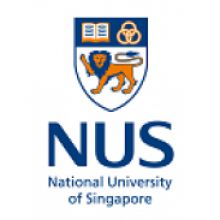The steady climb up the global university rankings of Singapore’s four research universities is well documented.
Public universities were given autonomy by the city state in 2004, and a large amount of money was made available by the Singaporean government for the National University of Singapore and Nanyang Technological University, Singapore in particular to build state-of-the-art facilities and to recruit international academics on salaries above the market rate.
But there are questions about how much all this has benefited Singapore as a nation.
It certainly hasn’t contributed to better economic performance. In fact, Singapore’s economic growth has slowed in recent years. This lends support to the view that higher rankings are more accurately seen as a consequence rather than a cause of good economic performance; other developed countries, such as Germany, Japan and South Korea, have managed to succeed economically without them.
Roughly 25 per cent of Singapore university students, and as many as two-thirds of faculty, are now foreign-born. From a social benefit-cost perspective, subsidising foreign students who then leave the country may not seem like a sensible use of funding.
Moreover, concerns have already been raised by Singaporean students, faculty, parliamentarians, the general public and even the Ministry of Education, about the dwindling proportion of native Singaporean tenure-track faculty. This limits the universities’ engagement with local society, while there are worries that having Singapore’s students taught largely by foreigners may have a long-term impact on national values, identity and culture – especially given Singapore’s relatively brief collective national history.
Singaporeans are more likely than foreign faculty to have the knowledge, interest and contacts to do research on Singapore. But context-specific and area studies research is more difficult to get published in Western academic journals, which privilege disciplinary and theoretical research of the broadest universal applicability. Moreover, there is a belief in Singapore – for which there is some evidence – that academics are expected to be supportive rather than critical of national policy agendas, and that their careers may otherwise suffer. There is thus a hesitation to locate studies of Singapore within global scholarly discourses in the social sciences and humanities.
Three of Singapore’s four research universities are headed by foreigners, and department chairs and deans are increasingly hired through global search firms. This over-representation of foreigners at senior levels reduces opportunities for locals to gain administrative experience and to rise to leadership positions.
To its credit, the government now prods universities to “do more” to hire a “local core” of Singaporeans. But retention remains an issue because there has been no deviation from the “global rankings” standards for promotion and tenure. Typically, local faculty also continue to bear heavier teaching and service loads than foreign faculty, and have greater involvement in external government and civil society activities – all of which cut into time for research.
Unhappiness among local faculty is dismissed as nationalist ranting or special pleading for positive discrimination, which some foreign faculty believe will hurt Singapore's image as an open society, or worse, has a racial motivation. An emerging “affirmative action stigma” attached to local faculty also causes tension, undermines collegiality and may discourage research collaboration between local and foreign faculty.
Large public subsidies to higher education also have an opportunity cost. Labour market forces increase wage premiums for skilled workers, and Singapore’s highly globalised economy has particularly high inequality and poverty rates relative to other small, high-income open economies.
One cause of this is the low level of social mobility. As the economy slows, the population ages and the income gap widens, more attention is being paid to budgetary pressures and priorities. The “rankings model” of higher education policy, with its heavy reliance on expensive foreign and senior faculty hires, may not be financially or politically sustainable in the medium to long term.
Pang Eng Fong is professor of strategic management (practice) at Singapore Management University, where he has previously served as dean of the business school and as vice-provost for academic planning. He has also headed Singapore’s diplomatic missions in Seoul, Brussels and London. Linda Lim is a professor at the University of Michigan’s Ross School of Business. She aided the Steering Committee on University Autonomy, Governance and Finance for the Singapore Ministry of Education in 2004.






